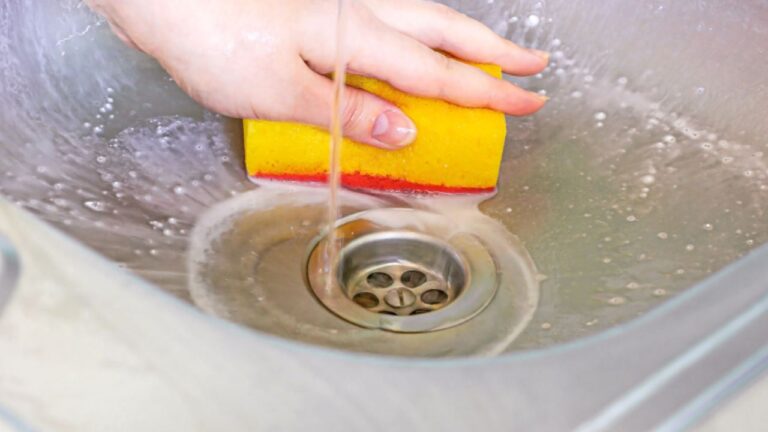A toilet flange is a crucial component that connects your toilet to the drain pipe and prevents leaks and odors. Learn how to install one yourself with this simple guide. If you are planning to replace your old toilet or install a new one, you may need to install a toilet flange as well. A toilet flange is a metal or plastic ring that fits around the drain pipe and holds the toilet in place. It also creates a seal between the toilet and the pipe, preventing water and sewer gas from escaping.
Install a toilet flange is not difficult, but it requires some preparation and attention to detail. You will need to measure and cut the flange to fit the pipe, position and secure it on the floor, and connect it to the toilet with a wax ring. Depending on the flange type and surface, you may also need to apply some PVC primer and cement to set the flange.
This article will show you how to install a toilet flange in 5 easy steps. And also provides tips and safety measures to help you complete the job successfully.
Let’s get started!
Preparation and Safety Measures to Install a Toilet Flange
Before you begin, you will need to gather the following materials and tools:
- A new toilet flange (choose one that matches the size and type of your drain pipe and floor surface)
- A tape measure
- A marker
- A hacksaw or a pipe cutter
- A drill and screws or bolts
- A hammer
- A screwdriver
- A level
- A wax ring
- PVC primer and cement (optional)
You must also turn off the water supply and drain the toilet before removing it. To do this, follow these steps:
- Locate the shut-off valve behind or below the toilet tank and turn it clockwise until it stops.
- Flush the toilet and hold down the handle until most of the water is gone.
- Use a sponge or a towel to soak up any remaining water in the tank and bowl.
- Disconnect the water supply line from the tank by unscrewing the nut with a wrench or pliers.
- Carefully lift the toilet off the floor and place it on a towel or a tarp.
Once you have removed the toilet, you will see the old flange attached to the drain pipe. You will need to remove it as well, but be careful not to damage or break the pipe or the subfloor. If you need help with how to do this, consult a professional plumber.
Step-by-Step Installation Methods
Now that you have prepared the area, you can install the new flange. Follow these steps:
Step 1: Measure and cut the flange
The first step is to measure and cut the flange to fit the drain pipe. To do this, follow these steps:
- Place the new flange over the pipe and align it with the center of the hole in the floor.
- Mark where the pipe meets the inner edge of the flange with a marker.
- Remove the flange and use a hacksaw or a pipe cutter to cut along the mark.
- Smooth out any rough edges with sandpaper or a file.
Step 2: Position and mark the flange to Install a Toilet Flange
The next step is to position and mark the flange on the floor. To do this, follow these steps:
- Place the flange over the pipe again and make sure it is level and centered.
- Use a marker to trace around the outer edge of the flange on the floor.
- Mark where the screw or bolt holes are on the floor as well.
- Remove the flange and set it aside.
Step 3: Drill holes and secure the flange
The third step is to drill holes and secure the flange with screws or bolts. To do this, follow these steps:
- Use a drill bit that matches the size of your screws or bolts and drill holes where you marked them on the floor.
- Place some washers over each hole if needed.
- Place the flange over the pipe again and align it with your marks.
- Insert screws or bolts through each hole in the flange and into the floor.
- Tighten them with a screwdriver or a wrench until they are snug but not too tight.
Step 4: Apply PVC primer and cement (optional)
The fourth step is to apply PVC primer and cement if your flange is made of plastic and needs to be glued to the pipe. To do this, follow these steps:
- Use a brush or a swab to apply some PVC primer around both ends of the pipe where they meet with the flange.
- Wait for about 10 seconds for them to dry.
- Use another brush or swab to apply some PVC cement around both the pipe’s and the flange’s ends.
- Quickly insert the flange into the pipe and twist it slightly to spread the cement evenly.
- Hold it in place for about 30 seconds until it sets.
Step 5: Reinstall the toilet and connect it to the flange
The final step is reinstalling the toilet and connecting it to the flange with a wax ring.
To do this, follow these steps:
- Place a new wax ring over the flange and press it down firmly.
- Carefully lift the toilet and align it with the flange and the bolt holes.
- Lower the toilet onto the flange and press it down gently to seal the wax ring.
- Insert washers and nuts over each bolt and tighten them evenly with a wrench until they are snug but not too tight.
- Reconnect the water supply line to the tank and turn on the water valve.
- Flush the toilet and check for any leaks or gaps around the base.
Routine Maintenance Tips
To keep your toilet flange in good condition, check it regularly for signs of damage or leakage. If you notice any cracks, corrosion, or water stains around the flange, you may need to replace it or repair it. You should also replace the wax ring if worn or cracked over time, which can cause leaks and odors.
Another tip is to tighten the bolts or screws that secure the flange to the floor if they become loose over time. This can prevent the toilet from rocking or shifting, which can damage the flange or break the seal. However, be careful not to overtighten them, which can cause cracks or deformation.
FAQs:
A toilet flange is a ring that connects your toilet to the drain pipe and creates a seal to prevent leaks and odors. You need one to install or replace a toilet.
The toilet flange type depends on the drain pipe’s material and the floor surface. You can choose from PVC, ABS, cast iron, brass, or other materials based on your specific needs.
You must measure and cut the toilet flange to fit the drain pipe. Place the flange over the pipe and mark where the pipe meets the inner edge of the flange. Then, use a hacksaw or a pipe cutter to cut along the mark and smooth any rough edges.
You must drill holes and secure the toilet flange to the floor with screws or bolts. Align the flange with the center of the hole in the floor and mark where the screw or bolt holes are. Then, drill holes where you marked them and insert screws or bolts through the flange and into the floor. Tighten them until they are snug but not too tight.
You must use a wax ring to connect the toilet to the flange. Place a new wax ring over the flange and press it down firmly. Then, lift the toilet and align it with the flange and the bolt holes. Lower the toilet onto the flange and press it down gently to seal the wax ring. Insert washers and nuts over each bolt and tighten them evenly until they are snug but not too tight.
Conclusion
Installing a toilet flange is not hard but requires some preparation and attention to detail. Following these 5 easy steps, you can install a toilet flange and save money on hiring a plumber. You will also prevent leaks and odors from ruining your bathroom experience.
Installing a toilet flange correctly has many benefits, such as:
- Improving your toilet’s performance and efficiency
- Preventing water damage and mold growth in your bathroom
- Enhancing your bathroom’s appearance and hygiene
- Increasing your home’s value and appeal
We hope this guide has helped you learn how to install a toilet flange in 5 easy steps.


